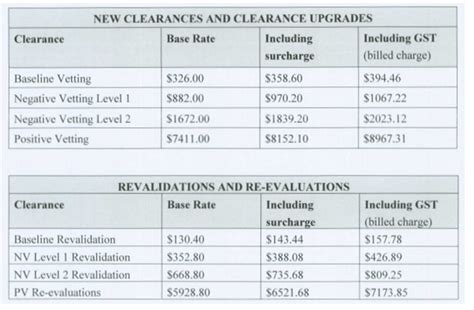Obtaining Security Clearance For Employment: A Guide

Introduction
Security clearance is a necessary requirement for many jobs, especially ones that involve working with sensitive information or handling classified materials. The clearance process can be complex and time-consuming, but it’s essential for protecting national security and ensuring the safety of employees. This guide will provide an overview of the security clearance process, including who needs clearance, the different levels of clearance, and how to obtain clearance.
Who Needs Security Clearance?
Individuals who work in certain positions, such as government contractors, military personnel, and federal employees, may require security clearance. Additionally, some private sector jobs, such as those in the defense industry or with government contractors, may require clearance. It’s important to note that not all jobs that require clearance will have the same level of clearance.
Levels of Security Clearance
Confidential
The lowest level of clearance is confidential, which is required for positions where unauthorized disclosure of information could cause damage to national security. Examples of positions that may require confidential clearance include administrative assistants and support staff.
Secret
The next level of clearance is secret, which is required for positions where unauthorized disclosure of information could cause serious damage to national security. Examples of positions that may require secret clearance include law enforcement officers and military personnel.
Top Secret
The highest level of clearance is top secret, which is required for positions where unauthorized disclosure of information could cause exceptionally grave damage to national security. Examples of positions that may require top secret clearance include intelligence officers and diplomats.
The Security Clearance Process
Step 1: Complete the SF-86 Form
The first step in the security clearance process is to complete the SF-86 form, which is a questionnaire that asks for personal information, employment history, and other relevant details. This form is used to conduct a background check and evaluate the individual’s eligibility for clearance.
Step 2: Investigation
After the SF-86 form is submitted, a background investigation will be conducted by the appropriate agency. This investigation may involve interviews with the applicant and their references, as well as a review of financial and criminal records.
Step 3: Adjudication
Once the investigation is complete, the agency will review the results and make a determination about the individual’s eligibility for clearance. This process, known as adjudication, takes into account all relevant information gathered during the investigation.
Step 4: Reinvestigation
Individuals with security clearance are subject to periodic reinvestigations to ensure that they continue to meet the eligibility requirements. The frequency of these reinvestigations depends on the level of clearance and the agency’s policies.
Tips for Obtaining Security Clearance
Be Honest
The security clearance process requires a high level of honesty, as any intentional misrepresentations or omissions can result in denial of clearance. It’s important to disclose all relevant information, even if it may be embarrassing or uncomfortable.
Keep Records
Keeping detailed records of employment history, travel, and other relevant information can make the security clearance process easier. This can also help ensure that all information provided on the SF-86 form is accurate and complete.
Avoid High-Risk Behaviors
Engaging in high-risk behaviors, such as drug use or criminal activity, can significantly impact eligibility for security clearance. It’s important to avoid these behaviors and maintain a clean record.
Stay Current on Finances
Financial issues, such as debt or bankruptcy, can also impact eligibility for security clearance. It’s important to stay current on finances and avoid any issues that could be seen as a security risk.
FAQs
What happens if I’m denied security clearance?
If an individual is denied security clearance, they may be able to appeal the decision or reapply after a certain period of time has passed. It’s important to review the reasons for the denial and take steps to address any issues that may have contributed to the decision.
How long does the security clearance process take?
The length of the security clearance process can vary depending on the level of clearance and the agency responsible for the investigation. However, it can take several months or even years to complete the process.
Can my security clearance be revoked?
Yes, security clearance can be revoked if an individual no longer meets the eligibility requirements or if they engage in behavior that is deemed a security risk. It’s important to maintain eligibility and avoid any behaviors that could put clearance at risk.
